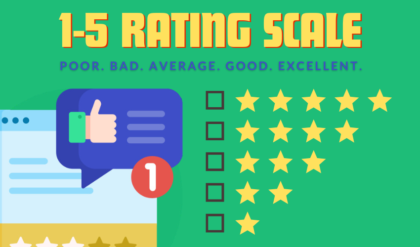Starting a faceless blog lets you share your voice without revealing your identity. It’s a fantastic way to express yourself, build a brand, or even earn income—all while staying behind the curtain. Maybe you’re passionate about a niche topic. Or you just value privacy. Whatever your reason, a faceless blog gives you freedom and flexibility. In this guide, I will walk you through the steps to create a successful faceless blog. Let’s dive in!

Why Choose a Faceless Blog?
A faceless blog means you don’t share personal details like your name, face, or location. You can write under a pseudonym or as a brand. Why go this route? For starters, it protects your privacy. You can share bold opinions without worrying about judgment. It also lets you focus on the content—not your personal life. Plus, it’s perfect for introverts or anyone who prefers staying out of the spotlight.
But it’s not just about anonymity. A faceless blog can feel more professional. It shifts attention to your expertise, not your personality. Think of it like a pen name for authors. J.K. Rowling used one, and it worked out pretty well, right?
A Step-by-Step Guide to Building a Faceless Blog
Step 1: Pick a Niche You’re Passionate About
Every great blog starts with a niche. What do you love talking about? Gardening? Tech gadgets? Minimalist living? Your niche is the heart of your faceless blog. Choose something you can write about for years without getting bored.
Here’s a tip: narrow it down. Instead of “travel,” focus on “budget travel for families” or “solo hiking adventures.” A specific niche attracts a loyal audience. Research what’s trending in your area of interest. Tools like Google Trends or Pinterest can spark ideas. Ask yourself: What problems can I solve for my readers? What unique angle can I bring?
Step 2: Choose a Blogging Platform
Next, you need a platform to host your faceless blog. There are tons of options, but here are the most popular:
- WordPress: Flexible, customizable, and great for SEO. WordPress.org (self-hosted) gives you full control, while WordPress.com is simpler but less flexible.
- Blogger: Free and beginner-friendly, but limited in design options.
- Wix: Drag-and-drop ease with sleek templates, perfect for visual niches.
- Medium: Great for writers who want to focus on content over design.
For a faceless blog, I recommend WordPress.org. It’s professional, scalable, and lets you stay anonymous. You’ll need a domain name and hosting, but more on that next.
Step 3: Get a Domain and Hosting
Your domain is your blog’s address (e.g., www.yourblog.com). Pick something catchy, memorable, and related to your niche. Avoid using your real name to keep your faceless blog truly anonymous. Tools like Namecheap or GoDaddy make it easy to buy a domain.
Hosting is where your blog lives online. Think of it as renting server space. Reliable hosts like Bluehost, SiteGround, or Hostinger offer affordable plans. Many include a free domain for the first year. Set up your hosting, connect your domain, and install your blogging platform. Most hosts have one-click WordPress installation—super simple!
Pro tip: Use a privacy service like WhoisGuard when registering your domain. It hides your personal info from public records, keeping your faceless blog secure.
Step 4: Design Your Blog (Without Showing Your Face)
Your blog’s design sets the tone. You don’t need to be a graphic designer—just keep it clean and user-friendly. Choose a theme that matches your niche. For example, a food blog might use warm, inviting colors, while a tech blog could go sleek and modern.
WordPress offers thousands of free and paid themes. Look for ones labeled “responsive” to ensure they work on mobile devices. Customize your logo and branding without personal photos. Use stock images from sites like Unsplash or create graphics on Canva. Your faceless blog should feel professional, not generic.
Don’t forget navigation. Make it easy for readers to find your posts, about page, and contact info. Speaking of which…
Step 5: Craft an Anonymous “About” Page
Your “About” page is tricky for a faceless blog. You want to build trust without sharing personal details. Focus on your mission and expertise. For example:
- Instead of “I’m Jane, a 30-year-old mom,” say, “This blog is your go-to resource for minimalist parenting tips, written by a passionate advocate for simple living.”
- Share your “why.” What drives you to blog? Maybe you’re helping people save money or teaching a skill you’ve mastered.
Keep it warm and relatable. Readers connect with stories, not just facts. You can even use a fun pseudonym like “The Budget Nomad” or “Tech Tinkerer” to add personality.
Step 6: Create High-Quality Content
Content is king—especially for a faceless blog. Since your personality isn’t front and center, your words need to shine. Here’s how to nail it:
- Write for your audience: Solve their problems. Answer their questions. Use tools like AnswerThePublic to find what people are searching for in your niche.
- Optimize for SEO: Sprinkle your target keyword (“faceless blog” in this case) naturally throughout your post. Aim for 1-2% keyword density. Include related keywords like “anonymous blogging” or “blogging without showing face.”
- Use engaging formats: Break up text with headings, bullet points, and images. Short paragraphs. Like this. Keep readers hooked.
- Be consistent: Post regularly—once a week is a good start. Quality over quantity, always.
Need inspiration? Check out successful faceless blogs like The Minimalists or Budgets Are Sexy. They focus on content, not personal branding.
Step 7: Promote Your Blog Anonymously
You’ve got a faceless blog—now get people to read it! Promotion is key, but you can stay anonymous. Here’s how:
- Social media: Create accounts under your blog’s name or pseudonym. Share snippets of your posts on platforms like Pinterest, Twitter, or Instagram. Use Canva for eye-catching graphics.
- Email marketing: Build an email list with tools like Mailchimp or ConvertKit. Offer a freebie (like an eBook or checklist) to get sign-ups. Emails keep readers coming back.
- Guest posting: Write for other blogs in your niche. Link back to your site without revealing your identity.
- SEO: Optimize your posts with keywords, meta descriptions, and alt text for images. Rank higher on Google, and readers will find you.
Avoid platforms that push for personal details, like LinkedIn, unless you’re comfortable creating a brand-focused profile.
Step 8: Monetize Your Faceless Blog
Want to make money? A faceless blog can be a goldmine. Here are some ideas:
- Affiliate marketing: Promote products and earn a commission. Sign up for programs like Amazon Associates or ShareASale. Write reviews or tutorials featuring affiliate links.
- Sponsored posts: Partner with brands for paid content. Stay anonymous by communicating via email.
- Digital products: Sell eBooks, courses, or printables related to your niche. Use platforms like Gumroad or Teachable.
- Ads: Display ads through networks like Google AdSense. You’ll earn money based on clicks or views.
Start small. Focus on building traffic before diving into monetization. A loyal audience is your biggest asset.
Step 9: Protect Your Privacy
Privacy is the backbone of a faceless blog. Here’s how to stay safe:
- Use a VPN to mask your IP address.
- Create a separate email for your blog (e.g., Gmail or ProtonMail).
- Avoid sharing location-specific details in your posts.
- Double-check images for metadata that might reveal your location. Tools like ExifTool can strip this data.
If you’re worried about hackers, use strong passwords and two-factor authentication for all accounts.
Step 10: Stay Consistent and Have Fun
Building a faceless blog takes time. Don’t expect overnight success. Post consistently, engage with your audience, and keep learning. Experiment with new content ideas. Track your traffic with Google Analytics to see what’s working. Most importantly, enjoy the process. You’re creating something unique—without ever showing your face!
Final Thoughts
A faceless blog is your ticket to sharing ideas while staying private. It’s empowering. Exciting, even. Follow these steps, and you’ll have a blog that’s professional, engaging, and true to your vision. Pick a niche you love. Build a site that’s easy to navigate. Write content that solves problems. Promote it smartly. Before you know it, you’ll have a thriving faceless blog that speaks for itself.
Ready to start? Grab that domain, set up your platform, and let your words take center stage. Happy blogging!




